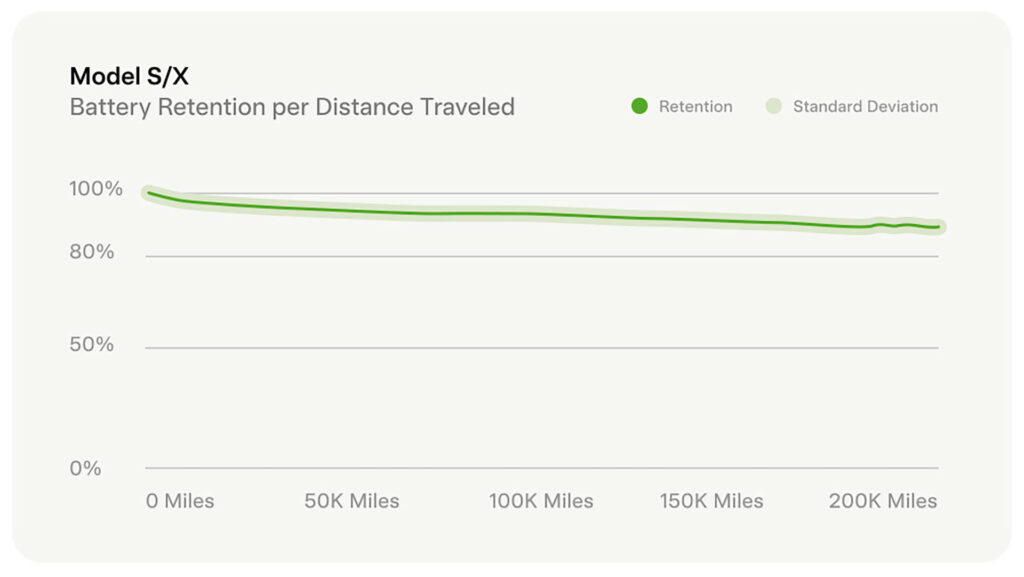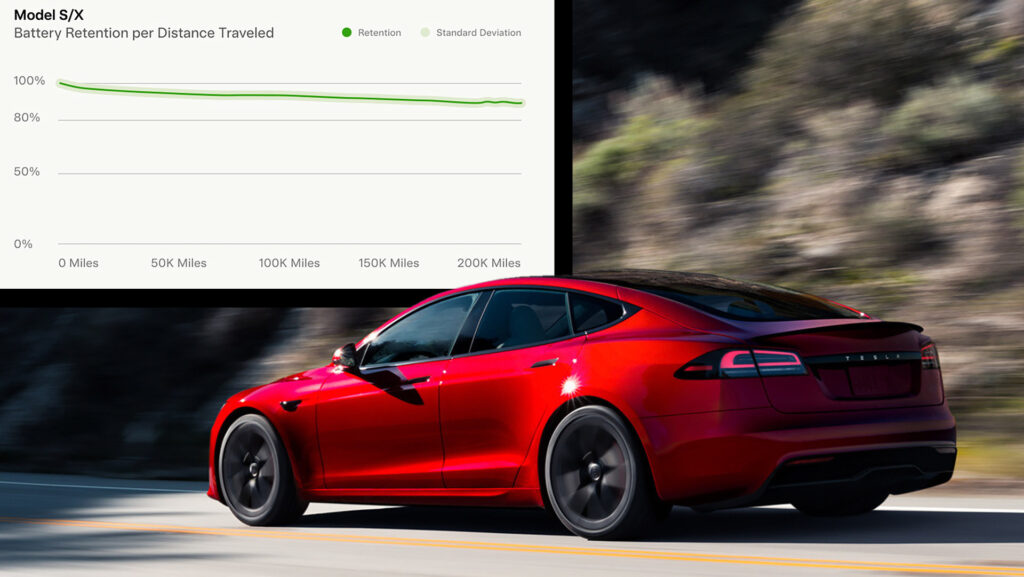Battery longevity and degradation rates are quite important for EV buyers who are anxious to see whether they will need to replace this shockingly costly and crucial component. The latest data coming from Tesla suggest otherwise, as the batteries of the Model S/X are expected to lose an average of just 12% in capacity after 200,000 miles (322,000 km) of use.
The new claim was included in the Tesla Impact Report 2022 alongside a battery retention graph. According to the automaker, the average car gets scrapped after 200,000 miles (322,000 km) in the US and after 150,000 miles (241,000 km) in Europe. This means that the battery pack will outlast the EV in most use cases, without showing a significant decrease in the range figures throughout its lifecycle. However, Tesla notes that it is not only mileage that might affect battery degradation, with age being another factor.
Read: Scania And Northvolt Created Battery Cells For Heavy EV Trucks With A 1.5 Million Km Lifecycle

Besides the battery retention data, the Impact Report had many other interesting bits of information. For example, according to the automaker’s calculations, the cost of ownership for the Tesla Model 3 is $0.49 per mile, which is slightly more but quite similar to the $0.46 figure of the Toyota Corolla despite the big difference in pricing between the two. Factors that contributed to that are the lower maintenance costs of EVs, the cheaper electricity, and the higher residual value.
Tesla also bragged about the uptime of its Supercharger network which ranges between 99.74% and 99.96% in the past five years. The impressive numbers reflect the “average percentage of sites globally that had at least 50% of their daily capacity functional for the year”.
Finally, Tesla revealed that combination trucks account for 18% of vehicle emissions in the US, despite representing only 1% of the fleet. The company wants to change that with the fully electric Tesla Semi which consumes 2 kW of energy per mile and has a range of 500 miles (805 km) when fully loaded. The cost of charging is 2.5 times lower than refueling a conventional truck with diesel, resulting in up to $200k of savings in the first three years of operation.













